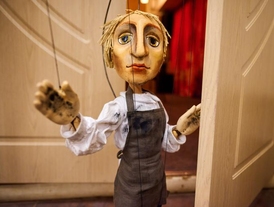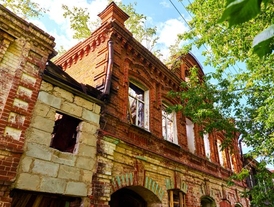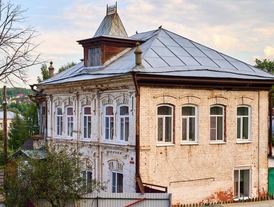Kstovo
On we go on our journey around the Nizhny Novgorod region, and this time we have decided to tell you about the ideal weekend route: a trip to the Kstovo district, which is very close by. Many people associate Kstovo with its famous water park, its sambo school, and its large mall, but in fact it has the fascinating tucked away places and gorgeous nature that have inspired many filmmakers. So, it is no coincidence that the Kstovo district has even been dubbed the Russian Hollywood!
A FEW FACTS
WHAT TO DO IN THE CITY
01
Find the waterfall
Not far from the Zelyony Gorod, or Green City, which is also considered the Nizhny Novgorod city district, on the Kudma River, you will find probably one of the few waterfalls in the Nizhny Novgorod region! This is an artificial structure: according to some sources, it is an unfinished dam for a small hydroelectric power station on the river. Incidentally, the waterfall does not freeze, even in winter!
02
Take a walk in the center of Kstovo and visit the water park
Head to Lenin Square, where you can look at the artworks and fountain, take a turn on the swings, and relax on the unusual-looking benches. Nearby you will find one of the town’s main attractions, the Atoll water park, with its comprehensive range of water activities, a sauna, a Jacuzzi, a hammam and numerous slides, including the extreme Kamikaze.
03
Learn more about cinema at the Volga Cinema Museum
In the museum exhibition dedicated to Nizhny Novgorod cinema, you can see a large collection of materials about films that were shot in the Russian Hollywood. You will be amazed at how many pictures were shot in the Kstovsky district, including Gaidai's «The Twelve Chairs», Konchalovsky's «The Story of Asya Klyachina ...» and many more.
04
Go to the local museum of history and folklore
The museum's displays are devoted to the history of the Kstovo district, and its collections contain over 8000 exhibits covering palaeontology, archeology and ethnography, as well as household items from the Soviet era.
05
Admire Veliky Vrag from the Lovers’ Slope
The Otkos Vlyublyonnykh, or Lovers' Slope, is a popular vacation spot for Kstovo’s residents. It provides incredible views over the Volga, the forests, and the Church of the Kazan Icon of the Mother of God. Built back in 1792 in the village of Veliky Vrag, the church now is a major architectural monument of federal significance. Some kind of movie has been filmed in almost every part in the Kstovo district, and Veliky Vrag provided the picturesque background for the «Method» series about a city detective, and the film «Aniskin and Fantomas» about the village detective.
06
Visit the village of Bezvodnoye
Bezvodnoye is one of the most beautiful places in Russia as it is located on the high bank of the Volga. The buildings here are merchant houses, made of solid stone with homemade carvings. It's wonderful just to take a walk around here, but be sure to visit the local attractions. Among them are Church of the Holy Trinity with its ornate altar-screen, and the Sunday School Museum, where you can see school supplies from the early XX century, antique clothing and jewellery, as well as learn about the traditions of the Orthodox feast of the Trinity.
07
Study the architecture of Rabotki
You can finish your journey through the Kstovo district at Rabotki. Sometimes Rabotki is referred to as «Vasyuki», because it was here that Soviet filmmaker Leonid Gaidai shot an episode of the film «The 12 Chairs» in 1971. After that the director had assigned the future capital of the USSR and all mankind to Rabotki. The main character of that film Bender also organized a simultaneous chess session here.In the XVIII and XIX centuries, Rabotki was the center of wooden shipbuilding. There were many merchants here, which means that a lot of abandoned mansions have been preserved! Don’t miss, for example, the house of merchant Ilyichev, the Ukhov estate, or the Boltunov house.
































